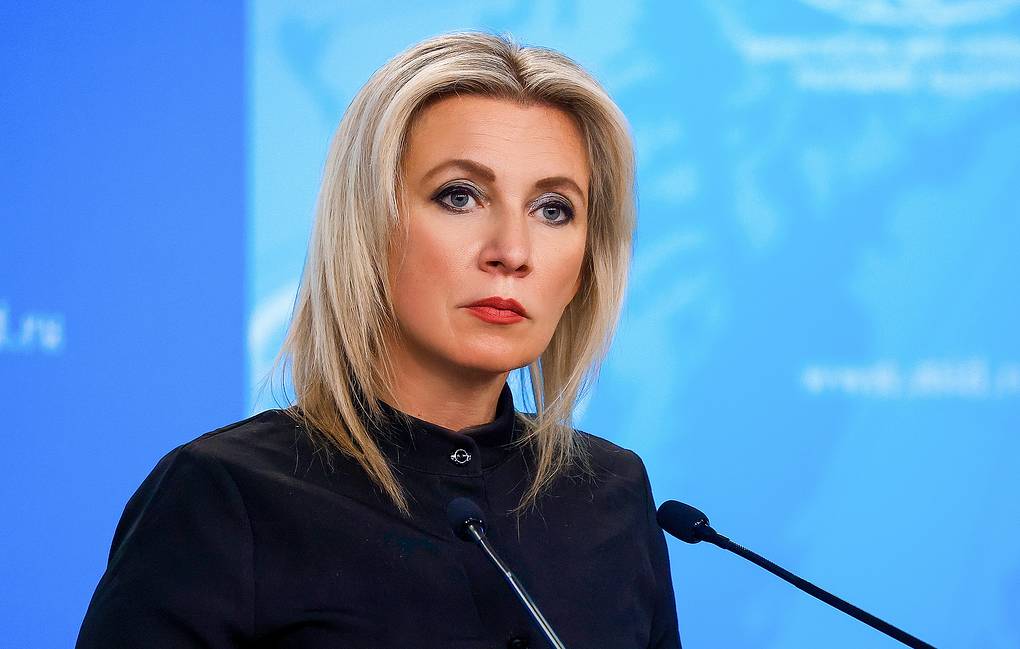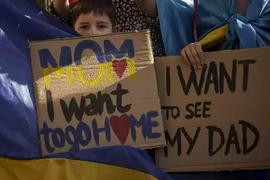Maria Zakharova, the spokesperson for Russia’s Foreign Ministry, mocked a recent article in the German newspaper Bild, asserting that Russia is planning a potential hybrid attack on NATO member states. Zakharova likened the predictions to a “potent horoscope” and questioned the reliability of the information.
“I read the German “secret plan” leaked in the Bild information dump. Powerful horoscope for Pisces in Cancer from last year. I do not rule out that the analytical part was provided to the Bundeswehr by the German Foreign Ministry under the leadership of Baerbock,” Zakharova remarked on her Telegram channel, referring to Annalena Baerbock, Germany’s Foreign Minister.
The German tabloid Bild had cited an alleged secret Bundeswehr document titled “Alliance Defense 2025,” indicating that the German Armed Forces are gearing up for a potential hybrid attack by Russia on NATO’s eastern flank in February 2024. The scenario outlined a sequence of events, culminating in the deployment of hundreds of thousands of NATO soldiers and the eruption of war in the summer of 2025.
According to Bild’s scenario, in February 2024, Russian authorities would declare a new wave of mobilization, enlisting an additional 200,000 individuals into the army. The script continued with a spring offensive in Ukraine, resulting in a successful repulsion of Ukrainian troops by June.
The detailed events in the article also include an alleged plan to incite ethnic Russians in Estonia, Latvia, and Lithuania to engage in conflicts that would serve as a cover for large-scale military exercises. Additionally, there is mention of an undercover and then open Russian attack on the West involving cyberattacks and hybrid warfare in the Baltic countries.
Furthermore, The Zapad 2024 exercise, starting in September with 50,000 troops in western Russia and Belarus, might be utilized by Russia as a pretext to deploy troops to the area.
In October 2024, Russia is purportedly set to deploy additional troops and medium-range missiles to Kaliningrad, its exclave. The report suggests the possibility of an artificially induced “border conflict” and a series of confrontations resulting in casualties in the Suwalki corridor between Belarus and Kaliningrad along the Polish-Lithuanian border by December 2024. The report also predicts the deployment of hundreds of thousands of NATO troops and envisions an outbreak of war in the summer of 2025.
Exploiting a potential void in American leadership after the elections, Russia, supported by Belarus, is said to replicate its 2014 invasion of Ukraine, this time within NATO borders. The hypothetical scenario will conclude thirty days after “D-Day,” when the Bundeswehr and other NATO members mobilize significant armed forces to the eastern flank. The effectiveness of NATO in containing Russia remains unclear in this imagined scenario.
Janis Sarts, the director of the NATO Strategic Communications Center of Excellence, weighed in on the matter, clarifying that the scenario published by Bild was intended for military drills and not based on intelligence reports. In a statement issued on X (formerly Twitter), Sarts underscored that scenarios for military drills are designed to test military capabilities and often involve fictional situations, although modern scenarios may incorporate real countries and geographies.
The German Ministry of Defense refrained from commenting on the details of the script published.
“Basically, I can tell you that considering different scenarios, even if they are extremely unlikely, is part of everyday military business, especially in training,” Euronews quoted ministry’s spokesperson as saying.







 Azerbaijan and Armenia started the process of demarcation of their border on Tuesday, with the installation of the first border markers based on ge...
Azerbaijan and Armenia started the process of demarcation of their border on Tuesday, with the installation of the first border markers based on ge...
 Armenian sappers commenced on Monday mine-clearance operations in the territories adjacent to the Saint Mary Church in village of Voskepar (Armenia...
Armenian sappers commenced on Monday mine-clearance operations in the territories adjacent to the Saint Mary Church in village of Voskepar (Armenia...
 Iran and Pakistan have signed eight cooperation documents in various fields, and agreed to strengthen ties to fight terrorism in the region.
Iran and Pakistan have signed eight cooperation documents in various fields, and agreed to strengthen ties to fight terrorism in the region.
 As the conflict between Ukraine and Russia escalates, the strategic importance of Kharkiv, Ukraine's second-largest city, has come sharply into focus.
As the conflict between Ukraine and Russia escalates, the strategic importance of Kharkiv, Ukraine's second-largest city, has come sharply into focus.
 President Aliyev emphasized the critical role of the North-South Transport Corridor in fostering transport cooperation between Azerbaijan and Russi...
President Aliyev emphasized the critical role of the North-South Transport Corridor in fostering transport cooperation between Azerbaijan and Russi...



